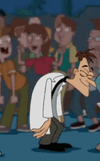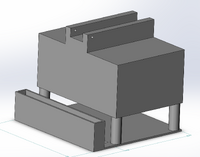BME100 f2018:Group1 T0800 L6
| Home People Lab Write-Up 1 | Lab Write-Up 2 | Lab Write-Up 3 Lab Write-Up 4 | Lab Write-Up 5 | Lab Write-Up 6 Course Logistics For Instructors Photos Wiki Editing Help | ||||||
OUR TEAM
The P+F Company LAB 6 WRITE-UPBayesian StatisticsOverview of the Original Diagnosis System The BME100 lab had 15 groups of 4-5 students each diagnosing a total of 30 patients. To account for and prevent error, each patient had three replicates, the calculated numbers for which were compared at the final step. PCR controls were also used as the standard to refer back to. ImageJ had calibration controls that were used to prevent variability in measuring the area, mean, and other values for the droplets. For every sample used in the fluorimeter, three images were taken to further account for error. The values found for these images were also averaged. The class's final data from the BME100 Fa2015 PCRresults spreadsheets shows that there were generally successful conclusions. There were few inconclusive results or unaccounted data. An issue that may have affected our data was that some of the solutions might've been lost upon transferring from test tube to test tube, leading the concentration to become more diluted that intended. This would've led some of our patients to appear negative. Another challenge was in reducing variability in ImageJ, despite the calibration controls. Because multiple people worked on ImageJ at once to record data, there would be some differences within each person's measurements, depending on how big of an oval was drawn, or which photos they chose to open in ImageJ. What Bayes Statistics Imply about This Diagnostic Approach The results for calculations 1 and 2 imply that the individual replicates for concluding whether a person has the disease SNP or not are reliable. The values are close to 1.
Intro to Computer-Aided Design3D Modeling Our Design We chose this design in order to make the usage of the fluorimeter simpler and more efficient. It differs from the original design in that it has height-adjustable legs, sort of like a telescope, and in that the phone stand is now connected to the fluorimeter, which increases the stability.
Feature 1: ConsumablesList of Items to Include
We plan to package the SYBR Green solution and the PCR mix in our kit, as well as glass slides and plastic tubes. These two reagents constitute our "very important" materials, because they are fundamental to the part of the experiment involving the fluorimeter. Without these two components, the fluorimeter cannot measure the amount of green light that is emitted in the droplets. The glass slides are necessary in the experiment as they inserted in the fluorimeter and hold the droplets of liquid for examining. Finally, plastic tubes would be included for convenience of holding the reagents. No other consumables will be included, as we are assuming that those buying this kit would already own more basic and expensive items, such as a micropipettor. "Very important" is defined as essential in order to use the main product. Feature 2: Hardware - PCR Machine & FluorimeterThe PCR machine will be included in the system as is. We found no major flaws that affected our usage, outside of the undesirably lengthy amount of time it took to run. There is no alternative or new type of hardware that will be replacing it. The fluorimeter will be included with a few alterations, in order to address some minor flaws that affected the ease of use. The redesign is discussed in further detail below. Our group has decided to redesign the fluorimeter. In our experience, adjusting the height of the fluorimeter was inefficient, because there was no way to manually adjust the height within the machine itself. We had to stack books and objects on top of one another in order to lift the fluorimeter to the appropriate height, in order to be viewed exactly from the side from the phone camera. In order to address this weakness, we added retractable telescope-like legs to the fluorimeter, so that the height could be adjusted easily to whichever phone was being used to capture images in the experiment. Additionally, another weakness we noted was the instability of the phone stand. When we tried to capture photos on the phone by tapping the screen, the phone would fall over, and this shifted the placement of the phone stand. This required us to readjust every time we took another photo, which was very inefficient. To overcome this, we connected the phone stand to the fluorimeter to make it more stable and immovable.
| ||||||





